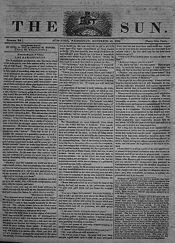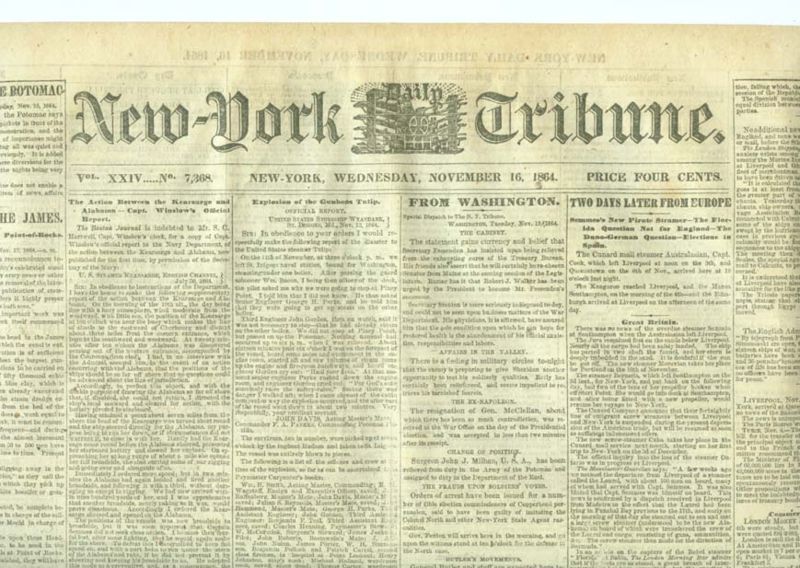In 1833 Benjamin Day started the New York Sun, which cost only a penny a copy and was hawked on the street by paper boys rather than delivered directly to homes via a pre-paid subscription. The motto of the paper, "It shines for all," reflected Day's commitment to cattering to the interests of the common folk. To provide the public with exactly the kind of news that it wanted, Day would send out troops of editors to look over the shoulders of readers and find out what aspects of the publication were resonating with them. The Sun proved to be so successful that it catalyzed the rise of the Penny Period in journalism (Vivian, 230). Advertisers soon caught on to the phenomenon and began to recognize the penny press as the fastest way to reach the largest number of potential customers.
Key shift: Newspaper revenues now came most often from advertising rather than from subscriptions! The notion of a free publication no longer seemed implausible. The stage for the shift was set by the Industrial Revolution, which was characterized by an influx of machinery for paper production, and increases in urbanization, immigration and literacy.
In 1841 the New York Tribune was started by Horace Greeley, a journalist, editor and politician credited with developing the editorial as a distinctive journalistic form (Vivian 231). Speaking out against the social ills that accompanied industrialization, among them poverty, illness and unfair employment, Greeley developed a distinct and opinionated voice. Journalists were no longer constrained to the dry and factual retelling of events.
In stark contrast to this editorial approach--which is comparable to the candid style of the Phoenix-- was the Associated Press. Formed in 1848 by collaborating New York newspaper publishers, this collaboration of journalists responded to the need for economical access to the news in New York (Vivian, 384). Associated Press stories were written objectively, with heavy emphasis on facts, so that they could be printed by multiple publications with different political leanings. Because AP articles were cheap to circulate, a new emphasis was placed in newspapers on one dominant, universal perspective.

November 26, 1834 cover of The New York Sun (link)

November 16, 1864 cover of The New York Tribune (link)
